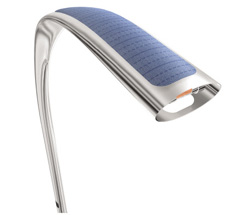 by Thomas Lockwood –
by Thomas Lockwood –
Have you noticed how similar some products are becoming? A Tesla and a Lotus, that’s an easy one. But I’m talking about the similarities between seemingly disparate objects, like an Audi car and Oakley sunglasses, a 3M stapler and an Alessi teapot, or a Starbucks café and your bank lobby. Consumers love cool design, and, in case you haven’t heard, companies are catching on. Investing in the design process can be a sustainable business advantage, because it tends to lead to five things: creative collaboration, innovation, differentiation, simplification, and customer experience.
For starters, designers tend to collaborate with each other, other disciplines, and users to generate new ideas, explore alternatives, and create new stuff (products, websites, brands, stores, etc.). The process of design thinking, co-creation, and design as creative collaboration can help companies move beyond their norms and create new markets. Companies like Intuit and Four Seasons have changed their corporate culture and how they compete with other market players by encouraging such collaborative processes. Intuit created a Design for Delight process, or D4D, which they use for problem solving and has led to launching new mobile products and services quickly, based on employee involvement and nurturing a design-thinking culture. This cross-pollination can be the path to innovation. Design helps bring innovation–whether in tech or customer-service–to market. Just take away the design part of any innovative idea and see what you’re left with. What would a Dyson Airblade hand-dryer be without its unique usability?
In addition to being a collaborative path toward innovation, design is a way to differentiate a brand’s products from its competitors’. This goes beyond logo, graphic design, and branding to enabling user and customer experiences that cannot be easily copied. HP has done so using their “D3” matrix of design value in their printer design strategy. And when P&G wanted to gain preference in the generic mop category, it asked Continuum Innovation to look into mopping. Continuum developed a waterless solution–the Swiffer–now a branded product asset and nearly a billion-dollar business.
We live in an experience economy, and design is key to creating meaningful customer experiences. Case in point: Philips Lighting wants to sell more light bulbs, but the products have developed to the point where differentiation is hard to achieve, so they’ve beefed up the retail experience by connecting with Engine Service Design to create new software and a service platform that helps their retailers manage their lighting and media assets across their stores. The simple light bulb became differentiated through service design and the retailer experience.
Lastly, design simplifies. We live in complexity, and there is nothing like using the sensibilities of design to unpack wicked problems. The data-storage company StorageTek used to have completely different parts for each of their different servers and data-storage product lines, mostly due to legacy issues and business unit independence. The design department created a common platform strategy using shared components–just as Toyota Highlanders and Sienna minivans share the same chassis platform. The move not only saved StorageTek millions of dollars in just a few years but was the environmentally responsible thing to do. Design simplifies and should enable reuse and ecological solutions.
It is time for the professional design community to promote the demonstrable value of design, as described above. In 1953, Neil Borden, the president of the American Marketing Association, helped define the value of marketing by coining the term “Marketing Mix,” which subsequently led to the famous 4 Ps of marketing (product, price, place, and promotion). In 2011, as the past president of the Design Management Institute, I propose that collaborate, innovate, differentiate, simplify, and customer experience become the Design Mix. Let’s talk in terms of real business value, because design is now gaining a seat at the table, and the last thing any c-suite needs is another empty suit.
HT: FastCompany.com (read full article)



